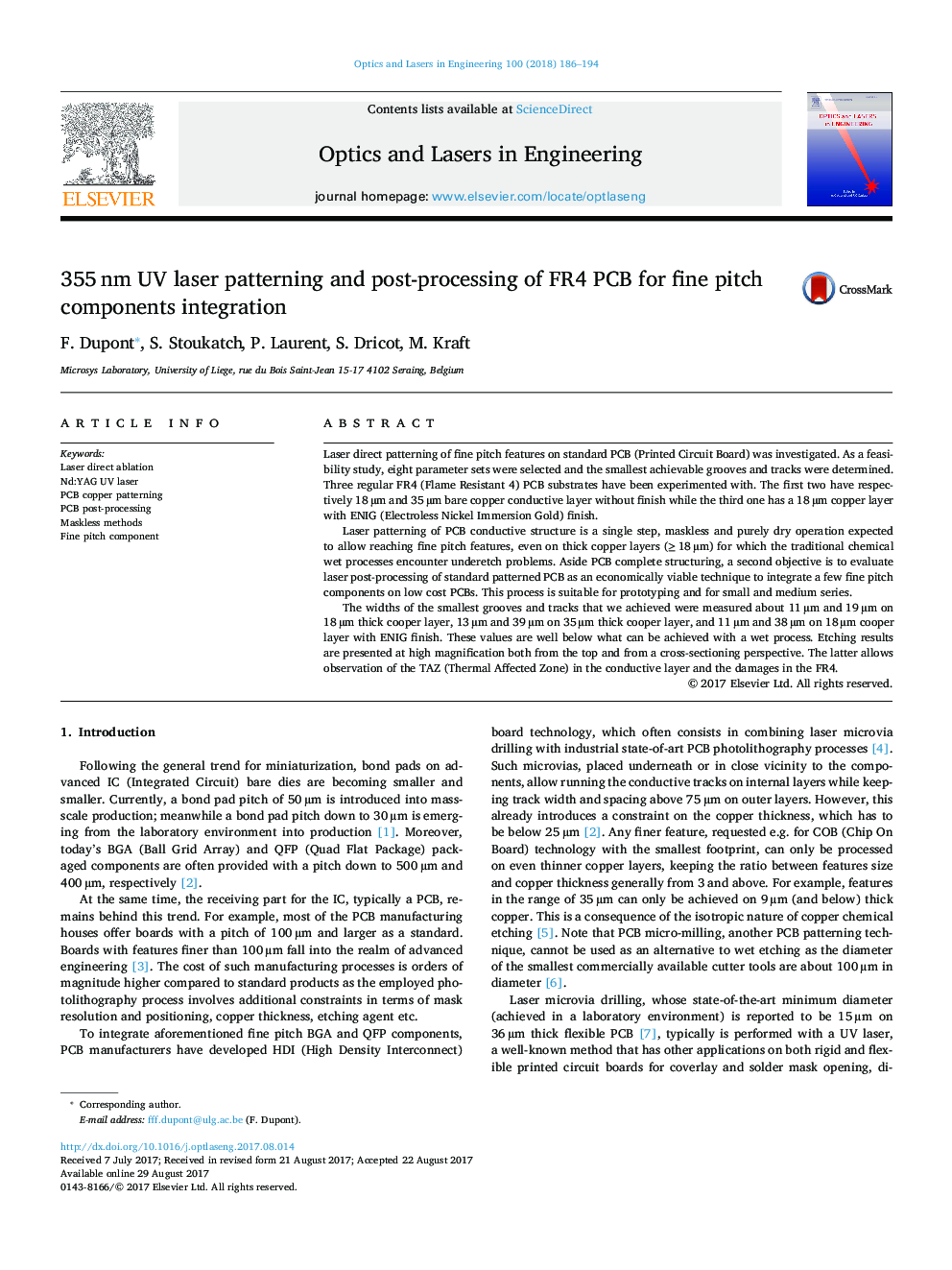| Article ID | Journal | Published Year | Pages | File Type |
|---|---|---|---|---|
| 5007690 | Optics and Lasers in Engineering | 2018 | 9 Pages |
â¢UV laser direct patterning of fine pitch features on several types of regular PCB was demonstrated.â¢Aspect ratio are 30 to 80% lower that what can be achieved by chemical etching.â¢Laser post-processing was presented a viable way to include a few fine pitch components to cheap low-class PCB.
Laser direct patterning of fine pitch features on standard PCB (Printed Circuit Board) was investigated. As a feasibility study, eight parameter sets were selected and the smallest achievable grooves and tracks were determined. Three regular FR4 (Flame Resistant 4) PCB substrates have been experimented with. The first two have respectively 18â¯Âµm and 35â¯Âµm bare copper conductive layer without finish while the third one has a 18â¯Âµm copper layer with ENIG (Electroless Nickel Immersion Gold) finish.Laser patterning of PCB conductive structure is a single step, maskless and purely dry operation expected to allow reaching fine pitch features, even on thick copper layers (â¥â18â¯Âµm) for which the traditional chemical wet processes encounter underetch problems. Aside PCB complete structuring, a second objective is to evaluate laser post-processing of standard patterned PCB as an economically viable technique to integrate a few fine pitch components on low cost PCBs. This process is suitable for prototyping and for small and medium series.The widths of the smallest grooves and tracks that we achieved were measured about 11â¯Âµm and 19â¯Âµm on 18â¯Âµm thick cooper layer, 13â¯Âµm and 39â¯Âµm on 35â¯Âµm thick cooper layer, and 11â¯Âµm and 38â¯Âµm on 18â¯Âµm cooper layer with ENIG finish. These values are well below what can be achieved with a wet process. Etching results are presented at high magnification both from the top and from a cross-sectioning perspective. The latter allows observation of the TAZ (Thermal Affected Zone) in the conductive layer and the damages in the FR4.
